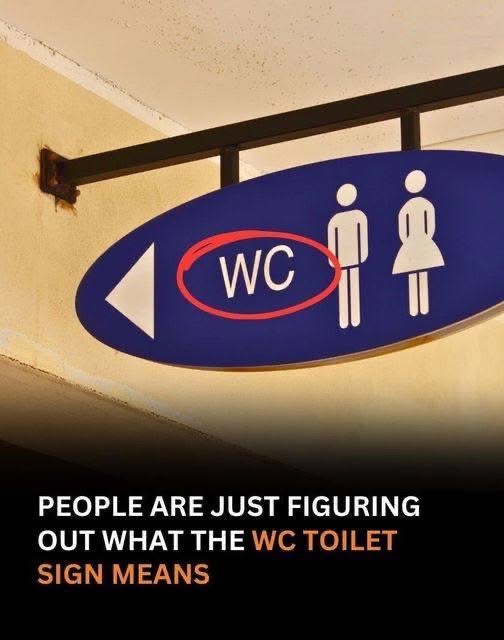
Have you ever noticed the letters WC posted outside a public bathroom and wondered what it means?
If so, you’re not alone as people around the world are trying to unravel the mystery of the WC, a space that identifies a room containing a toilet and a sink.
And while we’ll offer you an explanation of the WC, we can’t promise the term will make anymore sense than restroom, bathroom or loo…
In 2020, a couple named Shelby and Dylan shared a TikTok video that revealed a major difference in how some Americans and Canadians do their business.
“What in the world is a washroom?” asks Dylan as he walks by sign that says “washroom.”
“And what are they washing in there? Oh, it’s a restroom. The only thing I wash in there is my hands,” he tells his wife.
Off-camera, Shelby can be heard asking: “Do you rest in a restroom?”
“That’s a good point. They both don’t make much sense,” Dylan adds.
Online users jumped into the comments section, offering their opinions on the term they prefer to use for the sacred room.
“It’s called a bathroom, restroom, washroom and toilet,” offers one user.
A second follower said when they were visiting Disneyland, they “asked for the washroom” and they “sent me to the laundromat!”
A third adds, “Wait ‘til he finds out about water closets.”
“Water closet,” as defined by Merriam-Webster, refers to either a small room or compartment containing a toilet, or the toilet itself. Historically, people used “bathrooms” to bathe, “restrooms” to rest or freshen up, and “water closets” to relieve themselves. Today, names vary globally—“loo,” “restroom,” “bathroom,” “washroom,” “lavatory,” and “WC” all describe the same essential facility.
Modern signage frequently uses “WC,” especially in international settings like airports or hotels. Before the 19th century in America, only the wealthy had indoor toilets, while most relied on outhouses. Over time, plumbing improvements led to the widespread installation of water closets, and by the early 20th century, bathrooms typically combined toilets and bathing facilities. Although practical, this integration reduced privacy, leading to the concept of a separate water closet within a larger bathroom for the toilet.
Online discussions reveal global differences in terminology. Americans often question why a public “WC” is called a bathroom if there’s no bath, while others ask why it’s called a “water closet” if it isn’t an actual closet. In Russian, it’s referred to as “a room without windows,” and in Esperanto, it’s “necesejo,” meaning “necessary place.” Canadians, among others, commonly say “washroom,” reflecting the room’s primary function and purpose.